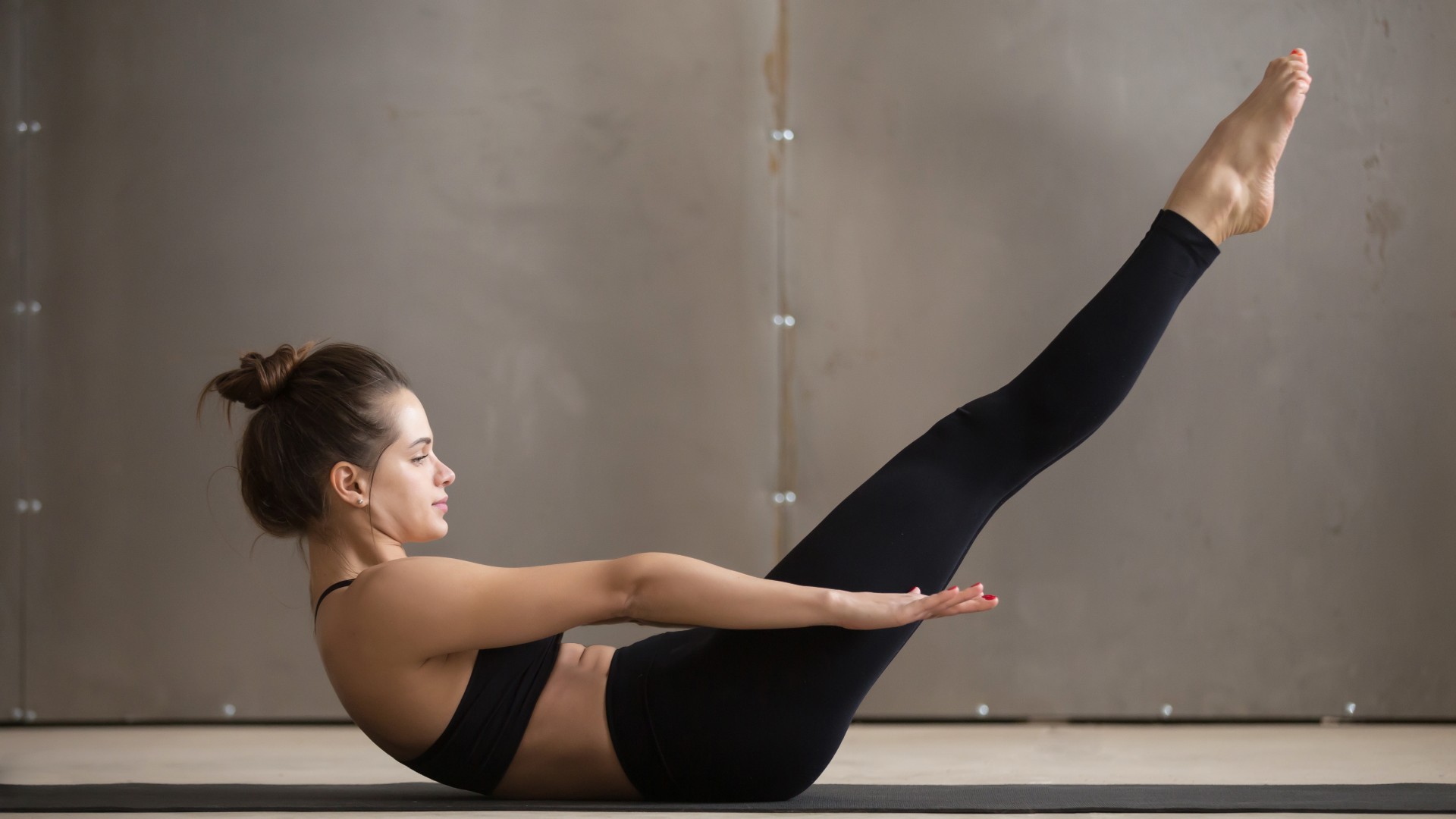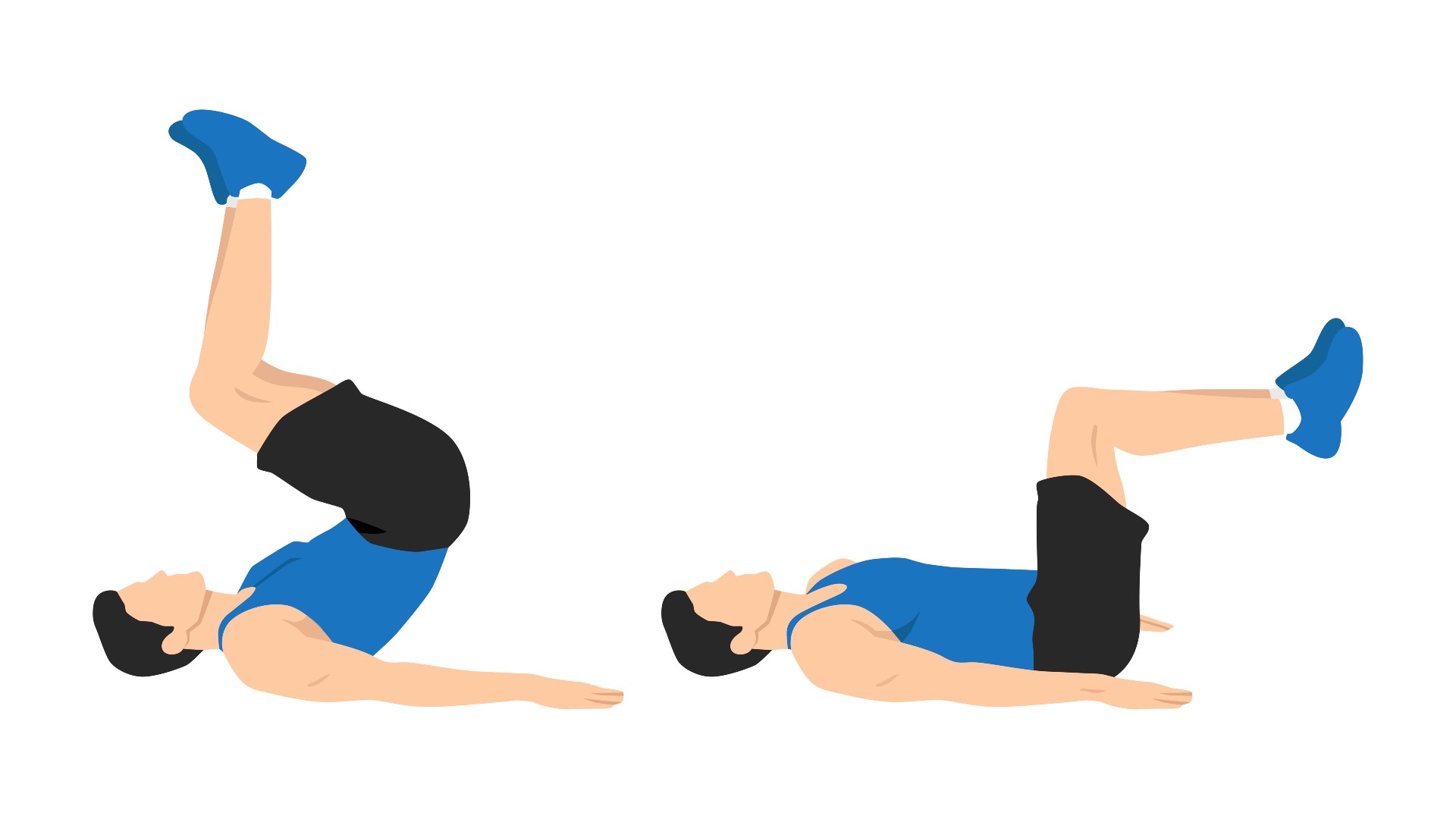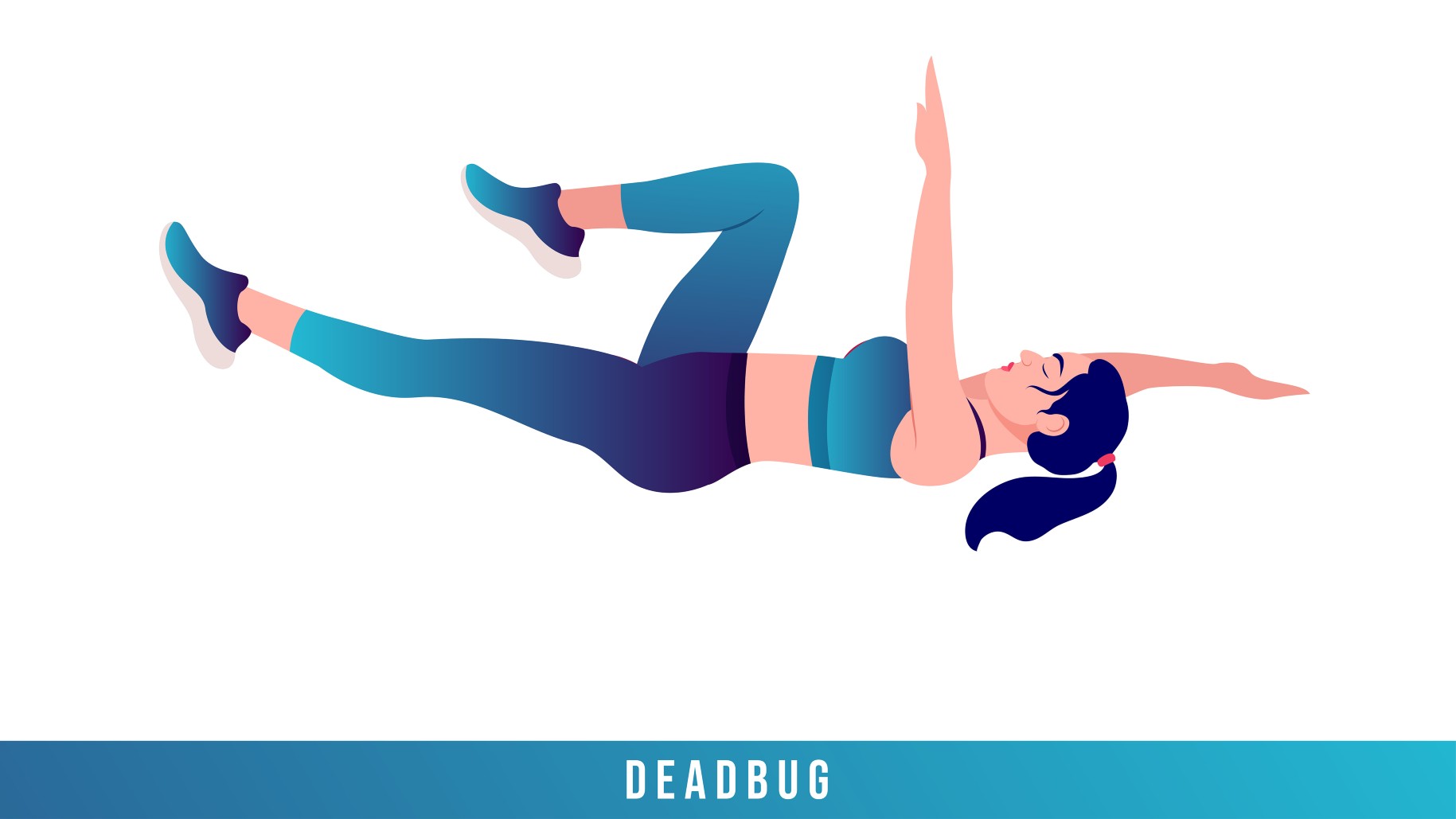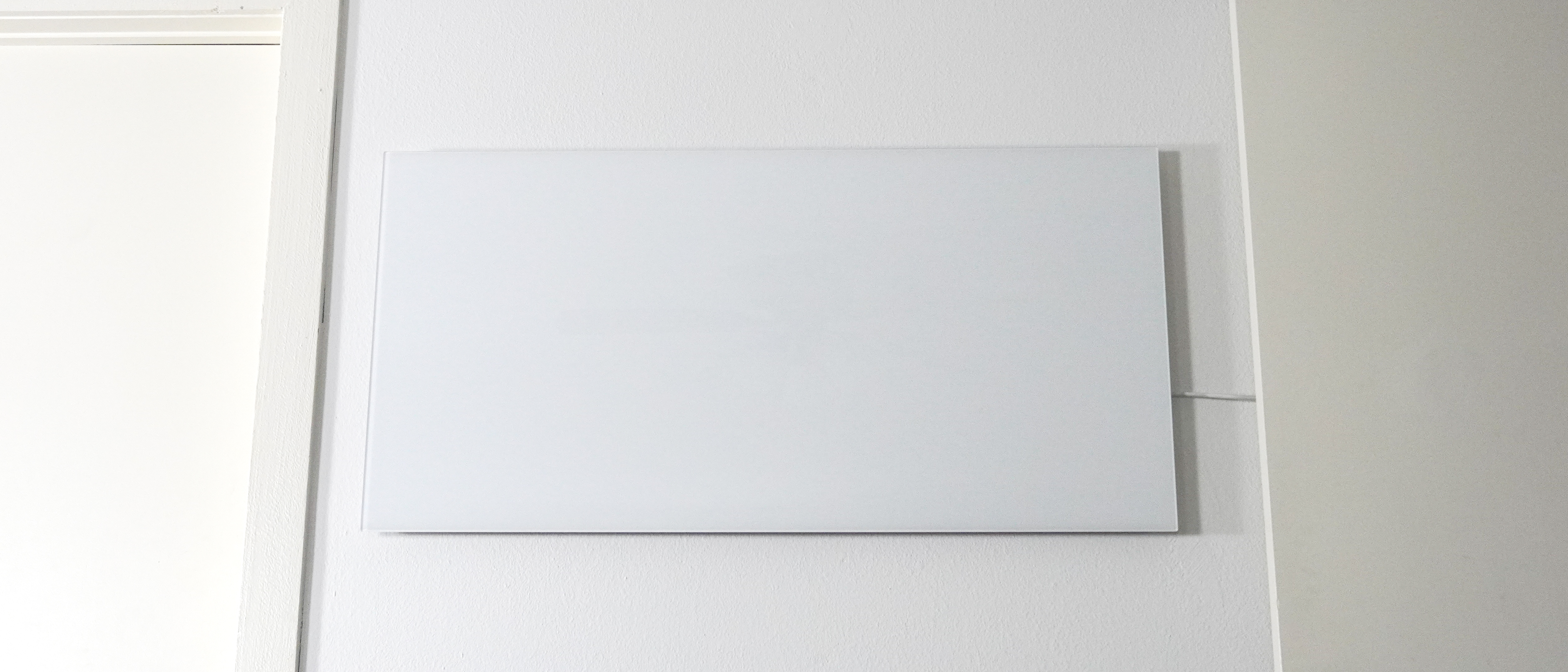
If you’re currently building a lower abs workouts library in search of a sculpted six-pack and rippling v-cut abs, these five Pilates exercises can help strengthen your core and build lower ab definition.
In the hunt for those pesky sought-after v-lines, lower ab exercises mainly target the lower part of your rectus abdominis (known as your outer six-pack muscles) and deep core muscles like the transverse abdominis and internal obliques. But while lower ab exercises can undoubtedly build strength, tone and definition, does Pilates for weight loss work?
Well, it’s not that simple. Sculpting rock-solid abs also depends on diet, genetics and a varied exercise routine to reduce body fat (learn how to calculate your body fat percentage and why it matters). According to Yale, high stress levels can also contribute towards stubborn pockets of abdominal fat, which makes achieving fat loss goals trickier.
But all is not lost. While you can’t spot-reduce fat, you can certainly couple a healthy diet with a repertoire of lower ab exercises — like this lower ab workout with 18 million views — to ramp up your chances of success. Read on to find out which five Pilates exercises we can’t get enough of.
Lower abs workouts: 5 Pilates exercises to try
You can never truly isolate your lower abs (the rectus abdominis is one long muscle), so targeting and strengthening all areas of your core will help keep you strong, nimble and injury-free.
Core exercises also improve stability and posture when building the rig you’re seeking in the gym, so banishing a lazy core and underperforming core muscles will help you lift heavier in exercises like the bench press and deadlifts.
However, these lower ab exercises are designed to torch the lower abs and switch on your hip flexors. Perform these exercises for 45 seconds of work and 15 seconds of rest for three to five rounds, or incorporate them into your existing workouts.
Get instant access to breaking news, the hottest reviews, great deals and helpful tips.
1. Lying Leg raises

Leg raises target your rectus abdominis (upper and lower abs), hip flexors, internal and external obliques and even your quads and glutes. It’s a great all-rounder to get the lower abs kicking up a burn. Find out what happened when our writer did 50 leg raises a day.
How to do lying leg raises:
Lay on your back with both legs extended on the ground. Keep your arms by your sides. For extra support, place your hands underneath your lower back near the top of your glutes. Tuck your chin towards your chest and tilt your pelvis towards your spine.
Keep your core engaged, then lift both legs with pointed toes toward the ceiling. Pause, then slowly lower two inches above the ground, maintaining a flat back and neutral spine.
Modification: Lift one leg at a time to reduce pressure on the lower back. Once you feel comfortable, try placing a weight between your feet or slowing the exercise for an extra challenge.
2. Reverse crunch

As the sit-ups vs crunches debate rages on, the reverse crunch remains a staple for building upper and lower ab strength by simply raising your legs towards your chest.
How to do a reverse crunch:
Lay on your back with your legs at 90 degrees, and knees bent. Keep your arms by your sides. Engage your core and lift your upper back slightly off the mat. Once you feel your stomach muscles engage, draw your knees towards your shoulders, lifting your hips off the mat. Reverse back to your starting position
Modification: Try removing your arms from the floor to further challenge your core.
3. Hanging leg raises

Similar to the lying leg raise, this exercise works the same muscles with an added challenge for your shoulders and arms. You’ll need a bar to perform this exercise.
How to do hanging leg raises:
Grip your bar with both hands, thumbs fully wrapped around the bar. Retract your shoulder blades by pulling them back and down your back. Engage your core and contract all of your muscles to keep your body tight. Point your toes, then slowly lift straight legs towards the bar without swinging. Slowly lower back down to your starting position.
Modification: Bend your knees and focus on bringing your knees to your chest until you feel ready to progress.
4. Dead bugs

Dead bugs are a surefire way to challenge core strength and stability by targeting most of your core muscles, including your upper and lower abs, obliques, pelvic floor and your deepest core muscles — the transverse abdominis.
How to do dead bugs:
Lay on your back with your knees bent and legs at 90 degrees, feet raised. Extend your arms above you with your hands directly above your shoulders. Engage your core and tilt your pelvis towards your spine to flatten your lower back.
As you inhale, extend your right arm behind you and your left leg away from you, both stopping an inch before the ground. As you exhale, return to your starting position and repeat on the other side.
Modification: Slow your movements down to increase the time your muscles spend working
5. V-sits

V-sits use isometric contraction (when your muscles are under tension without you moving) to build strength and stability. Like with a plank, you will work for a set time rather than for reps. Many muscles are at play during a v-sit, including your upper and lower abs, internal and external obliques and hip flexors.
Practicing v-sits can also keep you perfecting your hanging leg raises as you will need to pull your thighs towards your chest to maintain the hold.
How to do a v-sit
Start seated with your knees bent and feet planted. Extend your arms in front of you. Engage your core, maintaining a flat back with your shoulders rolled back and chest lifted.
Slowly lift your feet off the ground, then extend your legs in front of you at a 45-degree angle. Begin to shift your weight backward to create a v-shape with your body until you find your balance. Hold and continue to breathe.
Modification: Keep your knees bent or place your hands next to your hips for extra support.
Looking for more Pilates-inspired workouts? I tried this bodyweight Pilates ab workout for abs and glutes, and this Pilates exercise is one of the best for sculpting your abs.

Sam Hopes is a level 3 qualified trainer, a level 2 Reiki practitioner and fitness editor at Tom's Guide. She is also currently undertaking her Yoga For Athletes training course.
Sam has written for various fitness brands and websites over the years and has experience across brands at Future, such as Live Science, Fit&Well, Coach, and T3.
Having coached at fitness studios like F45 and Virgin Active and personal trained, Sam now primarily teaches outdoor bootcamps, bodyweight, calisthenics and kettlebells.
She also coaches mobility and flexibility classes several times a week and believes that true strength comes from a holistic approach to training your body.
Sam has completed two mixed doubles Hyrox competitions in London and the Netherlands and finished her first doubles attempt in 1:11.
